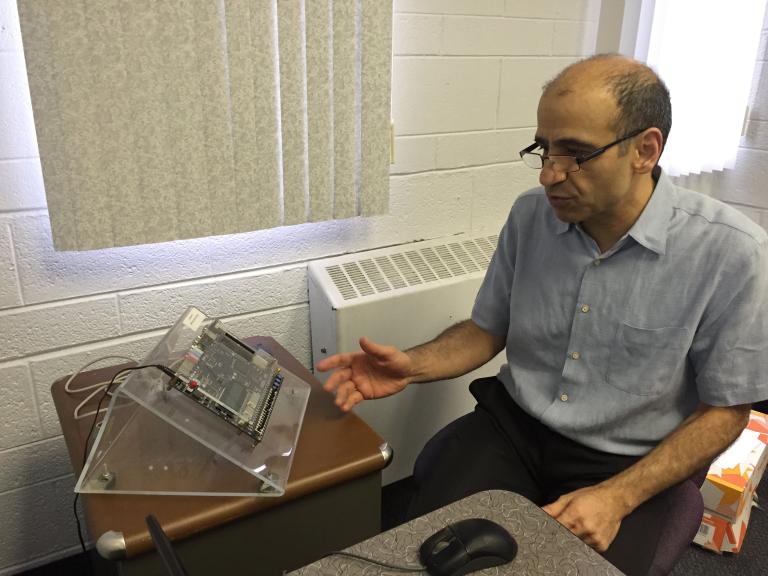
“The immediate byproduct of this project is stimulating students’ curiosity.”
Dr. Nozar Tabrizi, Electrical and Computer Engineering faculty member, is challenging his digital systems and computer architecture classes to think beyond the textbook and place themselves in the role of a producer and customer through an interactive and collaborative project.
Tabrizi along with other distinguished faculty members in multiple departments at Kettering University have received about $40,000 each, for a total of $240,000 over the last two years, from the Kern Entrepreneurial Engineering Network (KEEN) to embed and incorporate various aspects of innovation and entrepreneurship mindset into their individual engineering and science courses. Kettering also granted six additional internal topical grants valued at $7,500 each to faculty who creatively infuse entrepreneurial elements in their classrooms.
Tabrizi used this support to challenge students to think like producers and customers. In groups, students first took on the role of a customer. Each of the groups had either a defective or improvable product, such a digital clock, assigned to them. Each product came with a user guide that the students evaluated for discrepancies between design and function.
“They are supposed to uncover these discrepancies,” Tabrizi said. “The customer teams had to identify improvements in performance and size that were possible for their specific product.”
Identifying the customer’s role in evaluating defective products was the first part of the process. The second phase encouraged students to take on the role of a producer for a different product. As producers they had to address the customer complaints established by their peers and propose design and functionality improvements to mitigate these concerns.
The project stimulates curiosity from both the customer and producer levels.
“It is stimulating curiosity and engineering judgment,” Tabrizi said. “The immediate byproduct of this project is stimulating students’ curiosity. When you receive the user guide and the product, you need curiosity to establish the differences and discrepancies. As a producer, you see the discrepancy, you see it doesn’t work the way it should and you want to fix it. It will definitely stimulate curiosity.”
Considering the size and complexity of the products being evaluated, the project also encourages students to apply creativity for large-scale ambiguous problems. As producers, students must first identify the sub-set of the product that is associated with customer complaints and then propose a solution in the context of the larger complex system. The result of the solution is creating additional value for the product and the business producing it.
“This is multilevel teamwork and collaboration,” Tabrizi said. “Students must finish their role as customers in time because the producers are waiting for their feedback. This pushes students to have good time management skills.”
Tabrizi has received positive feedback from students who participated in the project over the past year. He believes the positivity and uniqueness of the project is spurred by the clear and creative roles that were assigned to each group and the collaborative opportunities that resulted. He plans on using this project in future classes to continue to develop creative and entrepreneurial thinking in Kettering classrooms.